There is no such sweet and fluffy pet as a rabbit!
While these cute animals are beloved and popular pets, it is important to take proper care of their cage and health to provide the best living conditions.
If you have ever wondered how often should you clean a rabbit cage and how to do it, you need to read this article to find it out!
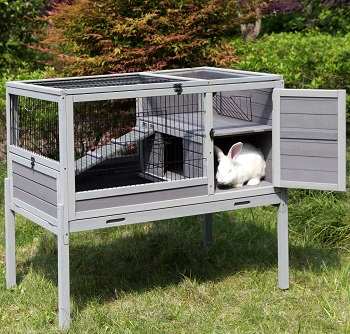

Why Is Rabbit Good Pet
Deciding which pet is ideal for you, it is needed to consider your possibilities and match them with the personality and behaviour of the animal you are interested in. So, if you want to have a sociable and furry pet, like a cat or dog, but don’t have time and space for walks, a rabbit is an ideal pet for you. Unlike other pets, rabbits are rather inexpensive and ideal for busy people. Since they don’t require a lot of maintenance, they can be ideal for children. For a pet, they need to be kept indoor in an appropriate cage. Yet, if you want to keep them outside, you should ensure a winter rabbit hutch to keep them comfortable.
They are ideal pets for small apartments since they are very clean and neat. Usually, but this depends on breed, they don’t have a strong smell and produce a lot of mess. Usually, it depends on the diet, too. Their primary food should be quality grass, usually combined with clover. It is considered that they adore carrots, but you should be careful with dosing! Carrot and apple slices should only be given as treats and in small amounts.
The Best Cage For Rabbit
Keeping a small and furry pet in your apartment requires some accessories and equipment. Small animal species differ in their needs, so for each, you need to know special needs. If you want to keep hedgehogs, you need to know what do hedgehogs need. The same is with rabbits, but fortunately, the list isn’t long.
When choosing the best cage for a rabbit, you should consider size, type and comfort. It is interesting that rabbits are very intelligent and can be trained to litter in a specific place, usually in a cage. This means you can let them be free for a good amount of time during the day. Yet, because they are very shy and scares easily, they should be locked in a cage when are alone. When it comes to size, it is sure that the bigger is better. The ideal cage should be four times bigger than the rabbit, but if they spend most of their time inside, it can be even bigger. For keeping more rabbits, hutches should be ideal.
When it comes to design, the most important is to be practical. They need to have a solid bottom for easier cleaning and collecting litter. Yet, they can be made of a different material. Some prefer wired metal cages where they can observe and socialise with rabbits, while others use wooden hutches. The most important are big doors where you can remove litter from. To be comfortable, you can add soft pillows or blankets, but also interesting toys to play with. Be sure that the corner with food and water is always clean and to leave some space for simple running.
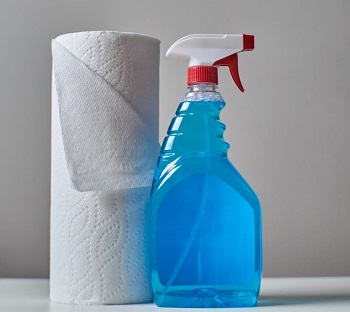

How To Clean A Rabbit Cage In 10 Steps
Cleaning and maintaining a rabbit cage is quite simple, but if you want to have a healthy animal, you should know how to do it properly. Here is an easy guide on how to clean a bunny cage in 10 steps!
Remove Rabbit
When you start cleaning the rabbit cage, you should be sure that a rabbit is outside of the cage and it feels safe. For a small rabbit, be patient and gentle to teach them a new routine. Be sure that they are in a safe spot and secured from running away. If you don’t move them out of the cage often, be sure that you have limited their space to run.
Remove Leftover Food
It is very crucial to remove any leftover food, especially fresh, to avoid a bad smell. Rabbits don’t have a habit of eating too much, so usually, there are pieces of food even around the pot. Be sure that you remove the water pot before cleaning, so their cage remains dry.
Scoop The Litter
Each rabbit cage should have a big open door to enable you to reach the end of it. Also, it would be best to choose the one with removable bottom. Some use dry grass, but it is preferable to use a pad indoors. Be sure that you sanitize space around it to prevent odours.
Throw Away Bitten Toys
Rabbits are very sociable animals and love toys, but you should know that their sharp teeth may produce a lot of damage on them. Be sure that you check on them from time to time and remove damage to prevent them from chewing bites. An extra tip always chooses natural toys, made of wood or similar material.
Clean Bowls For Food And Water
Be sure to involve food and water bowls in the cleaning routine. Rabbits are well-known as clean animals and they prefer eating from clean bowls. It is crucial to ensure them clean space to eat. Also, you need to change the water regularly and keep only fresh food.


Wipe Cage Walls
More than just cleaning inside of the cage, you will need to remove dust or food bits from the cage walls. Glass or plastic cages usually have solid walls which are easier to clean, but if you use wired cages, you may need a vacuum cleaner to remove all dust. Be sure and check for any sharp parts that may hurt the rabbit.
Remove any wet paper
It is recommended to put newspaper or any type of paper under the cage bottom. This will absorb any liquid that may drop from the upside. If you smell anything weird or just feel the moisture, be sure to remove it and put it fresh. This will prevent odours and ensure a dry sleeping area for your rabbit.
Sanitize Litter Bottom
Litter bottom, like other plastic parts like water bottles and toys, needs to be sanitized. You can use clean and hot water with mild detergent to clean them from smells and bacteria. Be sure to rinse it well before returning to the cage again.
Wash The Bedding
For textile bedding, you need to wash it regularly. Yes, it usually is softer and more comfortable for a rabbit to sleep but can keep the smell for a longer time. Wash it in a washing machine with hot water and detergent for sensitive skin. Be sure to use high temperatures to kill bacteria or any other illness.
Sweep Habitat Area
More than just cleaning inside, it is wise to sweep the habitat area, which is usually placed around the cage. While rabbits are very clean animals, sometimes they can throw food bits or grass outside the cage, especially when playing. Because of that, it is good to keep the area clean and prevent them from doing it again.
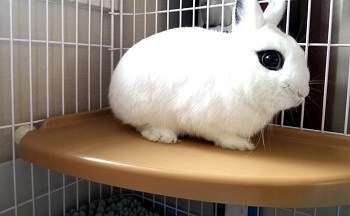

How Often Should You Clean A Rabbit Cage
Cleaning rabbit’s cage must be regular and can be divided into daily, weekly and monthly tasks.
The daily task should be adding fresh water and removing wet pads or newspapers. Like you need to feed them regularly, some basic things should be done with it. With some messy and emergencies, you should deal instantly.
Weekly tasks include cleaning food bowls, removing litter bins and cleaning food remains. You must check carefully on the needs on weekly basis. This means checking all toys, adding extra grass or cleaning litter to avoid odours.
Monthly tasks are rare but very important for the rabbit`s well-being. For deep cleaning, you should remove the rabbit from a safe place. This includes washing all textiles, sanitizing toys and plastic parts and cleaning walls. Be sure that you use unscented and mild detergents and rinse everything with clean water. Once in two years, you can replace the whole cage if you consider it too damaged for further use. Yet, regular cleaning saves you money and makes it last longer.
To Sum Up
There are some basic rules on how often should you clean a rabbit cage and it depends on you and your rabbit. Some basic, daily tasks will make it more comfortable, but weekly and monthly tasks keep it sanitized and clean. Be sure that you use unscented detergents and clean them deeply to avoid bacteria, illness or unpleasant scents. If you’re searching for a new rabbit cage, check our reviews of the best small bunny cages or small rabbit hutches and learn the difference.


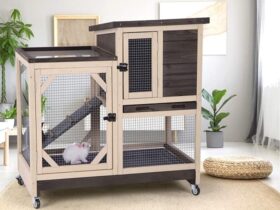

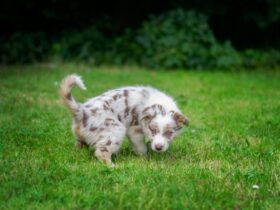
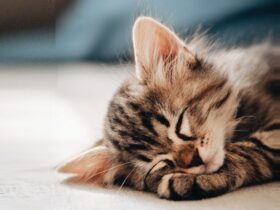










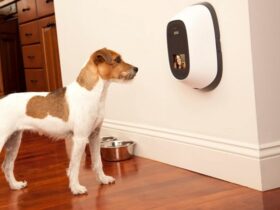

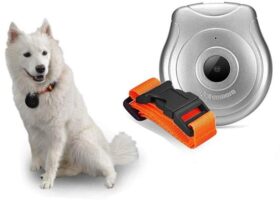

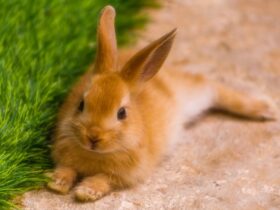
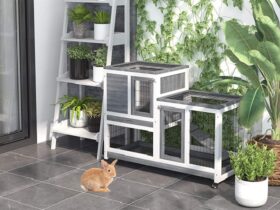
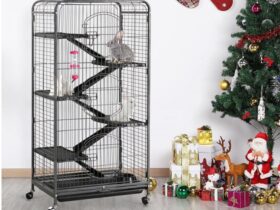
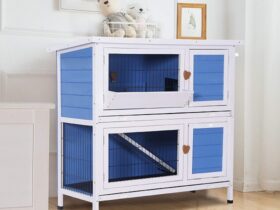
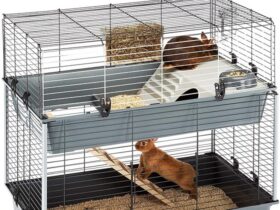
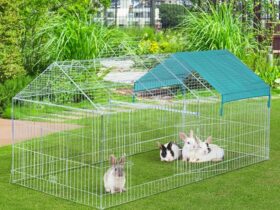
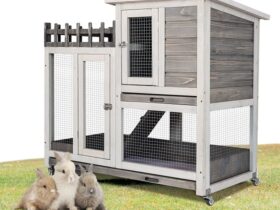
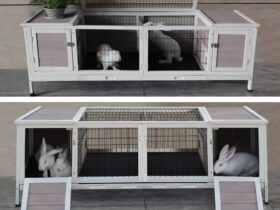
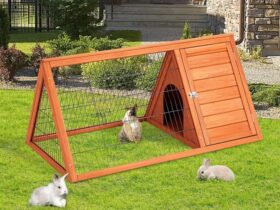
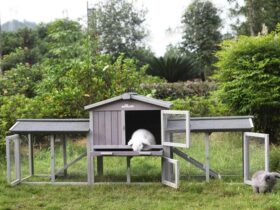
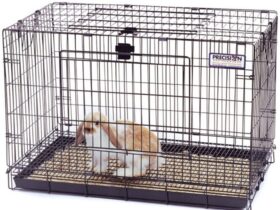
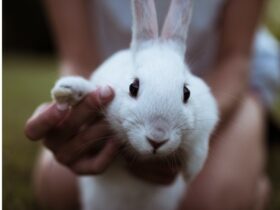
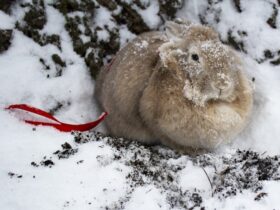
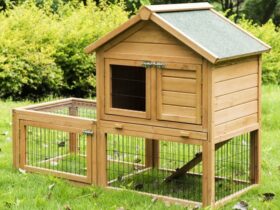
Leave a Reply